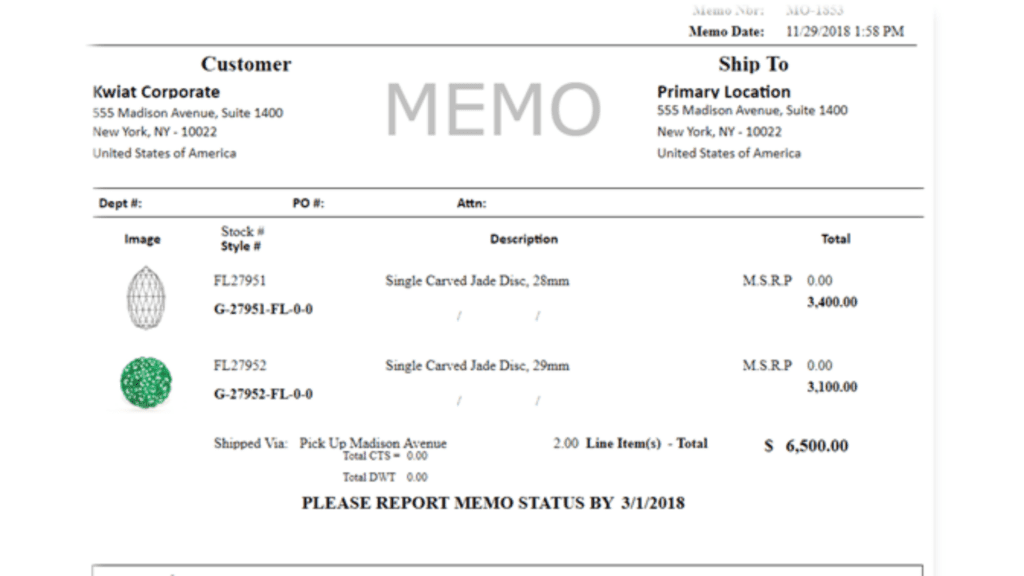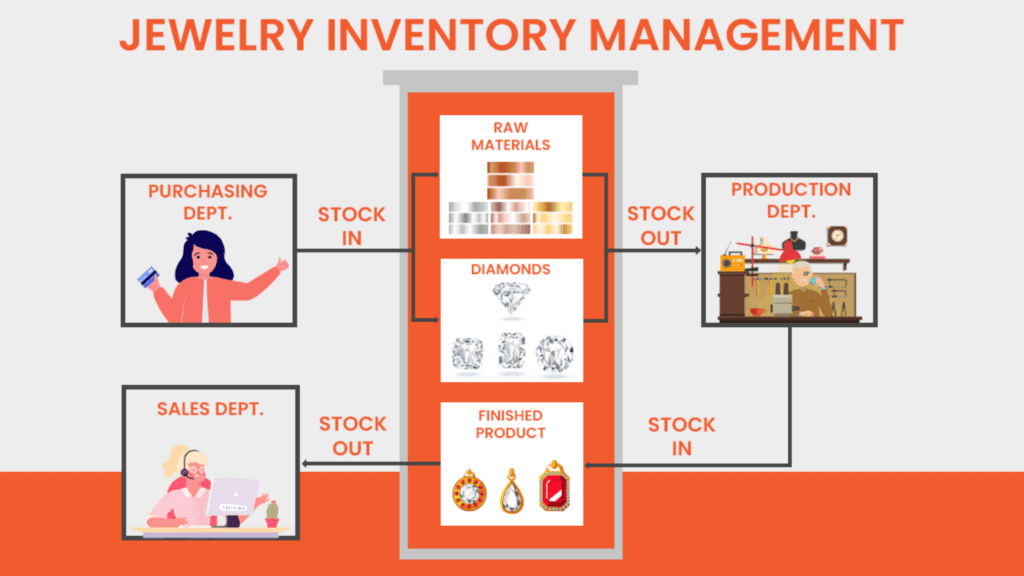The Ultimate Guide to Men’s Wedding Bands: Metals, Fit & Finish
Picking out a men’s wedding band can feel like a big deal, right? There are so many choices out there, it’s easy to get a little lost. But don’t worry,…
Most jewelers and diamond dealers have for decades shared in a system called memorandum or “memo.” This arrangement allows jewelers to offer a wider selection of diamonds or other stones without having to carry a large inventory.

Image Source: Info Sourcing
When a customer visits a store looking for a specific item that the store doesn’t have in stock, the jeweler contacts one of their suppliers to borrow a few stones. These stones are provided for a limited time, long enough to make a sales presentation. This borrowing is based on the jeweler’s good credit with their supplier.
If the customer chooses one of the stones, the jeweler and the supplier both benefit from a successful sale. However, if the customer decides not to purchase, the stones are returned to the supplier, waiting for the next potential buyer.
The memorandum system works well for both jewelers and wholesalers. Jewelers avoid the need to carry a large inventory and the associated costs. Wholesalers, on the other hand, benefit from having their stones sold through various stores, each with its own selling style and presence in different markets.
Shopping for unique loose diamonds? Use PriceScope’s diamond search to find loose diamonds from trusted vendors like Whiteflash, James Allen, and Blue Nile.
The memorandum system is not a free service, although it is rarely billed separately. Wholesalers, in offering memo stones, effectively provide financing to jewelers. They also absorb the costs associated with inventory tracking, security, and other expenses related to managing the stones.
As a result of these added services and expenses, memo stones generally come with a higher cost. Jewelers who pay cash and carry their own inventory tend to receive better prices and, in turn, enjoy higher profit margins.
Savvy jewelers aim to purchase for inventory the items that sell quickly and consistently in their stores. They prefer to use the memo system for more unusual or specialty items that may not move as fast.
This system works well because not every store excels with the same types of merchandise. Stores that perform well with low-quality but inexpensive goods are typically not the same ones that specialize in super-premium ideal cuts.
Learn more about the memorandum system and other essential jewelry industry insights by exploring PriceScope’s educational resources. Empower yourself with knowledge before making your next diamond or gemstone purchase.
The internet has amplified the memorandum system to new heights. Wholesalers can now create detailed, up-to-date lists of their available inventory and share them with their customers in real time. This instant accessibility has revolutionized the way dealers and jewelers interact with inventory.
Dealers can now offer what’s known as a “virtual” inventory. They list important details such as weight, dimensions, grading, photos, certificate scans, and even Sarin results for diamonds or gemstones that they have never physically seen or held. This allows dealers to showcase a vast selection without carrying the physical stock.
Image Source: Blue Nile
If a client wants to view a particular stone, the dealer can order it via FedEx or a similar carrier through the memo system. The presentation process with the customer is identical to any other stone, despite the dealer never physically possessing it beforehand.
Wholesalers that provide accurate, timely, and detailed information are thriving in this digital era. However, those that fail to deliver precise data are struggling under increased competition. Mastering this system has become an art form for many in the industry.
Use PriceScope’s diamond search tool to browse top-tier stones like Whiteflash's A Cut Above®, James Allen's True Hearts, and Blue Nile's Astor diamonds. Shop with confidence from vendors who prioritize quality and transparency.

Image Source: Piro
The best dealers, whether operating online or through a storefront, still prefer to carry an inventory. Owning merchandise allows for better markups and prevents competitors from selling the same stone. This control over the inventory gives dealers an advantage in making immediate sales when opportunities arise.
By having physical control of the stones, dealers can ensure that the merchandise meets their specific quality requirements. Additionally, owning the inventory removes the risk of a competitor purchasing the stone during an ongoing sale. This added security is especially important when dealing with high-demand or rare stones.
The more specialized a dealer is in what they sell, the more likely they are to purchase stones outright and carry them in their inventory. Dealers build relationships with various suppliers, and since not all suppliers list every available stone, each dealer often has a unique selection of inventory.
While dealers often have different lists of stones, there is some overlap. Certain stones are listed by many dealers, while others are more exclusive, available from only a few. When a dealer has a stone in their inventory, they typically highlight this fact proudly. For storefront dealers, the stones are often available for immediate examination.
Join PriceScope’s online community to connect with experts and enthusiasts. Discuss your diamond options, ask questions, and get advice from others who’ve navigated the buying process.
The memorandum system has been essential to the jewelry and diamond trade, offering flexibility to jewelers and extending wholesalers’ reach. While memo stones provide convenience, they come at a higher cost due to added services. The internet has further streamlined this process, enabling virtual inventories and real-time updates. However, many dealers still prefer owning inventory for better margins and control. Balancing memo use with inventory ownership remains key to meeting customer needs and maintaining profitability in the evolving industry.

Retail Diamond Prices Chart Updated Monthly.
Picking out a men’s wedding band can feel like a big deal, right? There are so many choices out there, it’s easy to get a little lost. But don’t worry,…
Ever had that sinking feeling when you look at your beautiful diamond and notice a tiny chip? It’s a real bummer, especially since diamonds are supposed to be super tough.…
PriceScope presents the third edition of our monthly Lab-Grown Diamond Price Analysis, offering timely insights into this fast-moving segment of the diamond market. Since introducing lab-grown diamonds to our platform…


Want to stay updated on the most recent blogs, forum posts, and educational articles? Sign up for Bling News, PriceScope’s weekly newsletter.